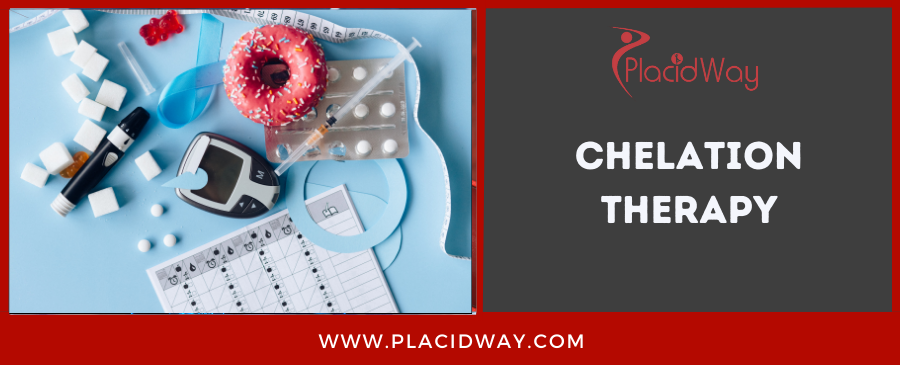
Table of Content
Chelation Therapy is a medical treatment used to remove heavy metals, such as lead, mercury, and arsenic, from the body. It involves the use of chelating agents, typically administered through an intravenous (IV) line, which bind to the heavy metals and help eliminate them through the body's natural processes. Originally developed for treating metal poisoning, Chelation Therapy has also been explored for other health benefits, including cardiovascular health, though these uses remain controversial.
| Treatment Type | Description |
|---|---|
| EDTA Chelation | The most common form of Chelation Therapy, using EDTA (ethylenediaminetetraacetic acid) to remove metals from the bloodstream. |
| DMPS Chelation | DMPS (2,3-Dimercapto-1-propanesulfonic acid) is used for removing mercury and other toxic metals from the body. |
| DMSA Chelation | DMSA (Dimercaptosuccinic acid) is an oral chelating agent often used for lead and mercury detoxification. |
To find out Different Packages for Chelation Therapy, Click here.
The Chelation Therapy procedure generally involves the following steps:
| Step | Description |
|---|---|
| 1 | Initial consultation and assessment of heavy metal levels through blood tests. |
| 2 | Insertion of an IV line to administer the chelating agent. |
| 3 | Monitoring of vital signs and electrolyte levels during the infusion. |
| 4 | Repeat sessions scheduled weekly or biweekly, depending on the severity of metal toxicity. |
| Country | Estimated Cost (USD) |
|---|---|
| Mexico | $2,000 - $3,500 |
| Turkey | $2,500 - $4,000 |
| Thailand | $2,800 - $4,500 |
| Colombia | $1,800 - $3,200 |
| India | $1,500 - $3,000 |
| Austria | $4,000 - $6,500 |
| USA | $5,000 - $8,000 |
| UK | $4,500 - $7,500 |
Find Prices for Chelation Therapy Near You: Click here.
The cost of Chelation Therapy without insurance ranges from $1,500 to $8,000, depending on the country and clinic. Countries like India and Colombia offer more affordable options compared to the U.S. or the U.K.
While Chelation Therapy has been explored for improving cardiovascular health, including removing calcium deposits from arteries, its effectiveness remains controversial and is not universally accepted by medical professionals.
Each session typically takes 1.5 to 3 hours, depending on the chelating agent used and the patient's condition. Multiple sessions are generally required over several weeks.
Common side effects include nausea, headache, and fatigue. Severe side effects, such as kidney damage or allergic reactions, can occur if the treatment is not properly managed.
A healthcare provider can determine the need for Chelation Therapy based on symptoms and blood tests that indicate elevated levels of heavy metals in the body.
Are you ready to cleanse your body of harmful heavy metals? PlacidWay connects you with top-quality clinics for Chelation Therapy Abroad. With skilled professionals, tailored treatment plans, and affordable pricing, we strive to help you regain your health and well-being. Contact us today to explore your options and schedule your consultation. Let PlacidWay guide you to a healthier future!
Live Cell Therapy | Naturopathy | Ayurveda